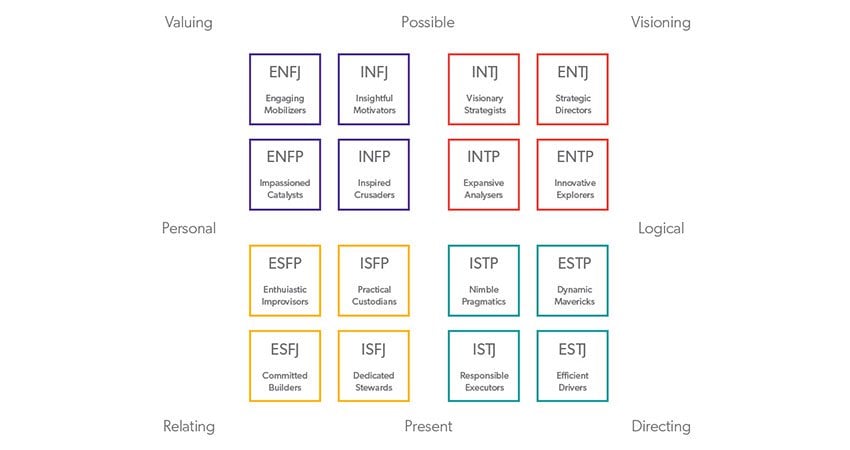
Each of us has a different way of taking in information, making decisions, and approaching life. The Myers Briggs Type Indicator (MBTI) is a tool that helps people gain insight to their own psychological ‘type’ preferences, which can help you understand natural differences among people.
Understanding your preferences and the preferences of others can be beneficial to you at work. It will enable you to approach your tasks, projects and coworkers in a way that suits your style, while accommodating others’ styles.
We spoke with Tom Ault, Director of Technical Training at ERC, about the Myers Briggs Type Indicator, the eight preferences and the overall goal of knowing your personality type.
The eight opposing preferences
There are eight opposing preferences, or dichotomies, that will assess and identify your preference. A style is then based on those preferences.
Those preferences include:
- Favorite world: Do you prefer to focus on the outer world or your own inner world? This is called Extraversion (E) or Introversion (I).
- Information: Do you prefer to focus on the basic information you take in or do your prefer to interpret and add meaning? This is called Sensing (S) or Intuition (N).
- Decisions: When making decisions on the information you have taken in, do you prefer to first look at logic and consistency or first look at people and special circumstances? This is called Thinking (T) or Feeling (F).
- Structure: In dealing with the external world, do you prefer to get things decided or do you prefer to stay open and flexible to new information and options? This is called Judging (J) or Perceiving (P).
Ault says once you decide on your preferences, this creates your personality type which can be expressed as four letters. “There are 16 different combinations that result in the four letters, and these are expressed as a Type Table.”

Note: The above graph is a modified version of the Myers Briggs Type Table.
The estimate of each dichotomy for the general U.S. population is about:
- 49% to 51% E’s to I’s
- 73% to 27% S’s to N’s
- 40% to 60% T’s to F’s
- 54% to 46% J’s to P’s
When looking at any of the 16 four-letter combinations, the most frequent type is estimated to be ISFJ at 14% of the general U.S. population and ESFJ at 12%.
MBTI compared to other personality type tests
The MBTI is not really a personality test in that there are no correct or better answers. It is just an indicator that helps people identify with personality preferences of which they may associate with.
“Some personality assessments attempt to identify ineffective behaviors as a way to clinically help people adjust those behaviors…
…the MBTI does not do that, nor does it measure knowledge, intelligence or ability. Instead, it is an indicator that helps to identify one’s personality preferences in a value neutral manner, all done in a positive light. Other personality instruments are based on different theories of personality and therefore reflect different assumptions about personality.”
Ault goes on to say that there is no “best” instrument and all have some validity. The important aspect to keep in mind is the more we can understand ourselves, the better we are able to manage ourselves for better outcomes in both our personal and professional lives.
Overall goal of knowing your personality type
The main benefit of knowing your type is self-awareness which will lead to better self-management.
“Knowing more about who you really are will help you understand why you do the things you do or think the way you do, and help understand why others do the things they do,” says Ault.
